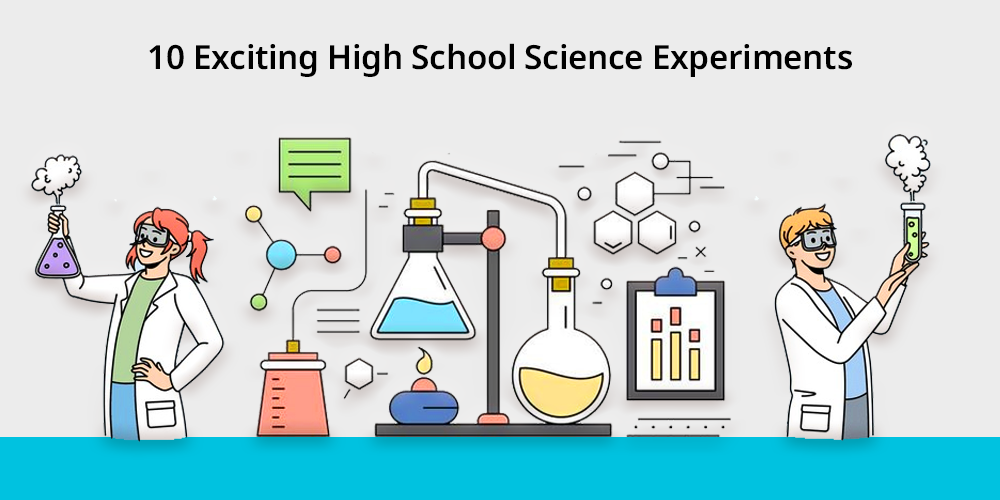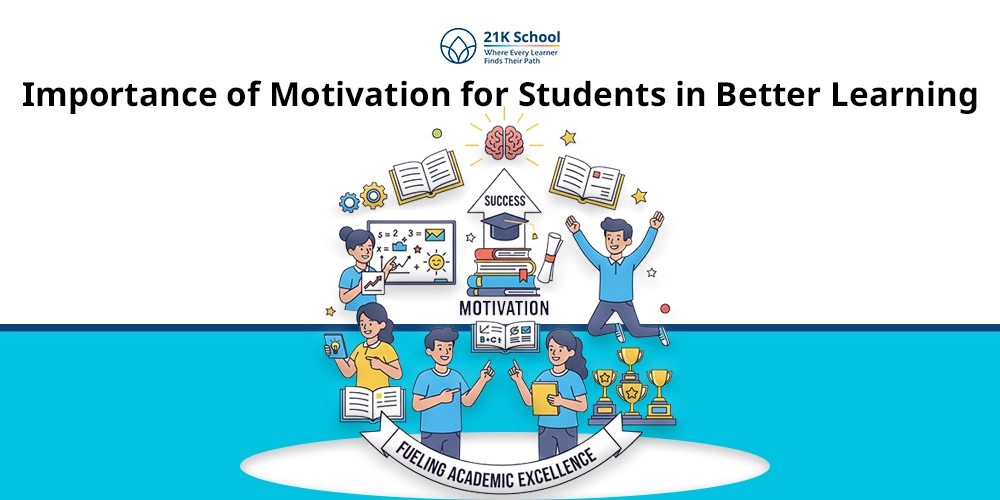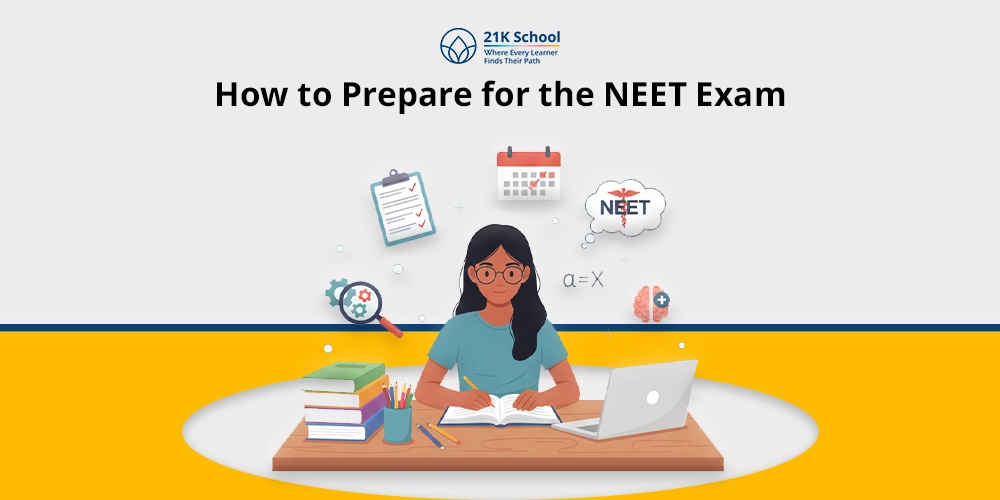
Science becomes thrilling when you can touch it, see it and feel it. High school is a great time to go beyond the textbook and do some hands-on work that allows you to bring your classes to life.
If you are a student preparing for a science fair or a teacher who is looking to find some fun activities for your classroom, this list of fun experiments is exactly what you need.
Each of them is simple to do, uses common household items, and helps illustrate an important science concept. Further, you can know more about the science experiments for young students here.
So here are 10 science experiments for high school students that they will enjoy as well as learn from!
Contents
- 1. DIY Non-Newtonian Fluid Maze
- 2. Banana DNA Extraction
- 3. Lemon Battery Power Test
- 4. Invisible Ink with pH Indicators
- 5. Cloud in a Bottle (Pressure & Temperature)
- 6. Magnetic Cereal Test
- 7. Walking Water Colour Transfer
- 8. Egg in a Bottle (Air Pressure Trick)
- 9. Fireproof Balloon Trick
- 10. Sound Wave Visualisation with Salt
- Conclusion
1. DIY Non-Newtonian Fluid Maze
Concept: Viscosity and fluid behaviour
DIY Non-Newtonian Fluid Maze showcases how a blend of cornstarch and water can behave as both a liquid and a solid. This will help to demonstrate how pressure impacts non-Newtonian fluids.
You’ll Need:
- Cornstarch
- Water
- Mixing bowl
- Spoon or hands
- Small marble
- Cardboard (for maze walls)
Steps:
- Mix 2 parts cornstarch with 1 part water in a bowl.
- Stir until the mixture feels thick and solid under pressure but flows when still.
- Build a simple maze using cardboard on a tray.
- Pour the mixture into the tray.
- Try to move a marble slowly and quickly through the fluid to observe changes.
2. Banana DNA Extraction
Concept: Cell biology and genetics
Banana DNA Extraction is an experiment where you can pull out actual strands of DNA from a banana by breaking down its cells. The transformation takes very few supplies and can show students how cells that carry genetic material can be isolated using only common household items.
You’ll Need:
- Ripe banana
- Dish soap
- Salt
- Water
- Coffee filter or strainer
- Rubbing alcohol (chilled)
- Ziplock bag
- Clear cup
Steps:
- Mash half a banana in a ziplock bag.
- Mix 1 cup of water with 1 tsp salt and 1 tsp dish soap.
- Add the solution to the banana, seal, and mash again.
- Filter the mixture through a coffee filter into a cup.
- Slowly add cold alcohol along the side of the cup.
- Wait and observe DNA forming as white, stringy strands.
3. Lemon Battery Power Test
Concept: Electricity and chemical energy
In the Lemon Battery Power Test, a lemon can produce electricity via a chemical reaction between two metals. This demonstration is perhaps the most basic, but it can still produce enough energy to run small electronics. Understand more on the energy with the help of top science experiments for kids renewable energy
You’ll Need:
- 2–3 lemons
- Copper coins or strips
- Zinc nails or galvanised nails
- Wires with clips
- An LED light or a small clock
Steps:
- Roll the lemons to loosen the juice inside.
- Insert a copper coin and a zinc nail into each lemon (without touching).
- Use wires to connect zinc from one lemon to copper in the next (series circuit).
- Connect the final two leads to the LED or clock.
- Observe the device powering up!
4. Invisible Ink with pH Indicators
Concept: Acids, bases, and chemical indicators
Invisible Ink with pH Indicators is an activity where lemon juice, when heated, acts as an invisible ink that reappears using a natural pH indicator. It allows you to show students how acids and bases can react to provide visible changes.
You’ll Need:
- Red cabbage
- Hot water
- Lemon juice
- Baking soda solution
- Cotton swabs
- White paper
Steps:
- Boil chopped red cabbage in water to create the pH indicator.
- Dip a cotton swab in lemon juice and write a message on paper.
- Let it dry completely.
- Brush cabbage juice over the paper to reveal the message.
- Try with baking soda and compare colour changes.
5. Cloud in a Bottle (Pressure & Temperature)
Concept: Condensation and atmospheric pressure
Cloud in a Bottle is a demonstration of how we can produce a visible cloud inside a bottle by changing the pressure and temperature of the air inside. This can be considered a controlled version of how clouds are created in our atmosphere.
You’ll Need:
- Clear plastic bottle with cap
- Warm water
- Match
- Adult supervision
Steps:
- Add a little warm water to the bottle and shake it to moisten the air.
- Light a match, blow it out, and drop it into the bottle quickly.
- Close the bottle with the cap.
- Squeeze the bottle hard several times and then quickly release.
- A cloud should form inside the bottle.
6. Magnetic Cereal Test
Concept: Nutrition and magnetism
In the Magnetic Cereal Test, cereal that has been fortified with iron is crushed down in water, and then the visible iron is retrieved using a magnet. For making your kids learn the science basics, learn about the science experiments for 4th class here.
You’ll Need:
- Iron-fortified cereal (like cornflakes)
- Water
- Ziplock bag
- Magnet
- Bowl
Steps:
- Crush the cereal and place it in a ziplock bag.
- Add some water and shake until it forms a slurry.
- Move a strong magnet along the outside of the bag.
- Observe small black iron particles being attracted to the magnet.
- Try different cereals to compare iron content.
7. Walking Water Colour Transfer
Concept: Capillary action and colour mixing
Walking Water Colour Transfer uses paper towels to transfer colored water between two cups using capillary action. The transfer also allows for the mixing of colored liquids as they travel through the paper towels.
You’ll Need:
- 3 clear cups
- Water
- Food colouring (2 colours)
- Paper towels
Steps:
- Fill two cups with colored water and leave the middle one empty.
- Fold two paper towels into strips and place them bridging between the cups.
- Wait and watch the colored water “walk” into the middle cup.
- Observe the new colour created by mixing.
Explore the top science experiments with water and try at your own.
8. Egg in a Bottle (Air Pressure Trick)
Concept: Air pressure and gas behaviour
Egg in a Bottle is an experiment where you heat air inside a bottle, and it creates a vacuum that will pull a boiled egg inside. This activity helps to understand the power of air pressure.
You’ll Need:
- Hard-boiled egg (peeled)
- Glass bottle with neck slightly smaller than the egg
- Paper strip
- Match/lighter
- Adult supervision
Steps:
- Light a small piece of paper.
- Drop it into the bottle quickly.
- Immediately place the egg on the bottle opening.
- Watch as the egg is pulled into the bottle by pressure changes.
9. Fireproof Balloon Trick
Concept: Heat transfer and specific heat capacity
Fireproof Balloon Trick shows how a balloon full of water will not pop when held over a flame. The water absorbs the heat and stops the rubber from melting too quickly.
You’ll Need:
- 2 balloons
- Water
- Candle or lighter
- Matches
- Adult supervision
Steps:
- Fill one balloon with air and one with water (not full).
- Light a candle.
- Hold the air-filled balloon above the flame; it will pop.
- Hold the water-filled balloon above the flame; it won’t pop (unless held too long).
- Observe the surprising difference.
10. Sound Wave Visualisation with Salt
Concept: Sound waves and vibrations
In Sound Wave Visualisation with Salt, we see that Sound waves create visible patterns in the salt that is spread on a flat surface. This experiment allows sound waves to be understood through visual effects.
You’ll Need:
- Plastic wrap
- Bowl
- Salt or sugar
- Bluetooth speaker or phone
- Rubber band
Steps:
- Stretch plastic wrap tightly over the bowl and secure with a rubber band.
- Sprinkle a small amount of salt on top.
- Place the bowl over or near the speaker.
- Play different tones or music and watch the patterns form.
- Try different frequencies and volumes.
Also explore about some simple science projects for kids with rocks and minerals .
Conclusion
These experiments are more than just fun; they provide a better understanding of real scientific concepts in a way that brings both discovery and play.
No matter what discipline you are looking at – electricity, biology, chemistry or physics – each experiment provides an interactive way to view important concepts and ideas. When provided with materials and a bit of creativity, science inspires and teaches.
Your next read: Fun science experiments for class 1


